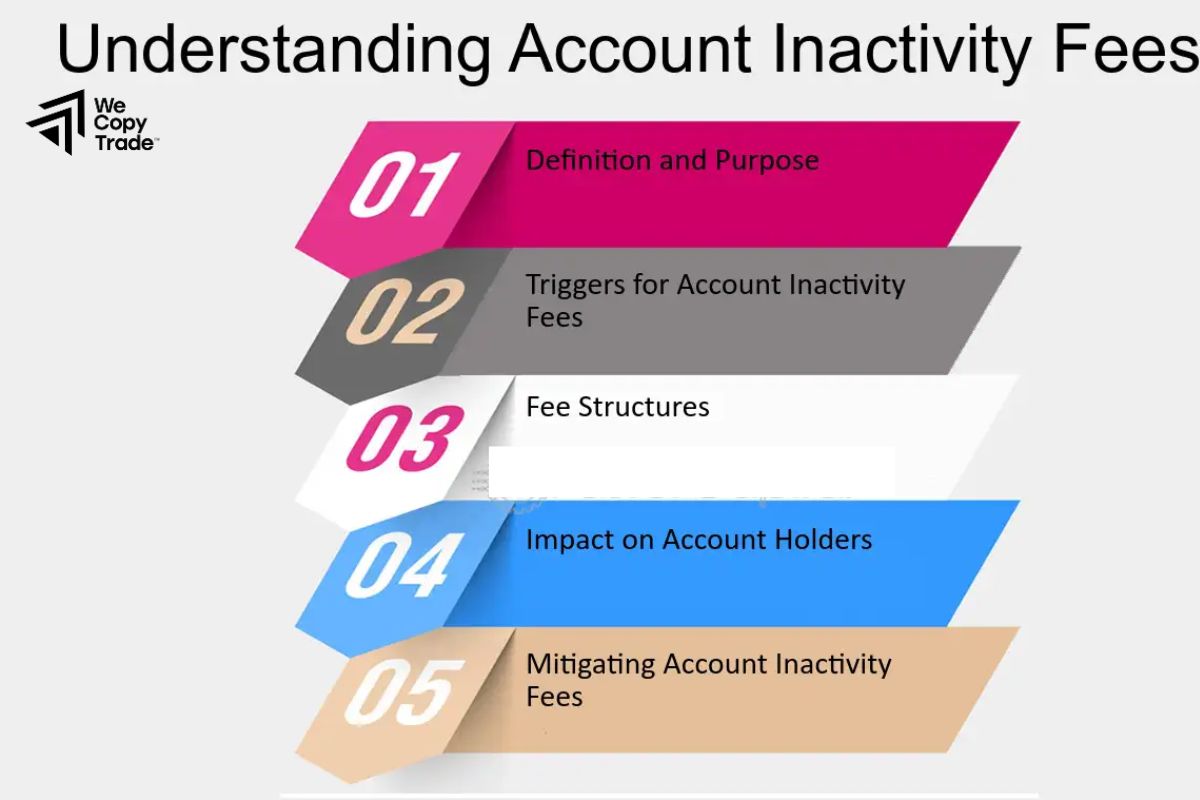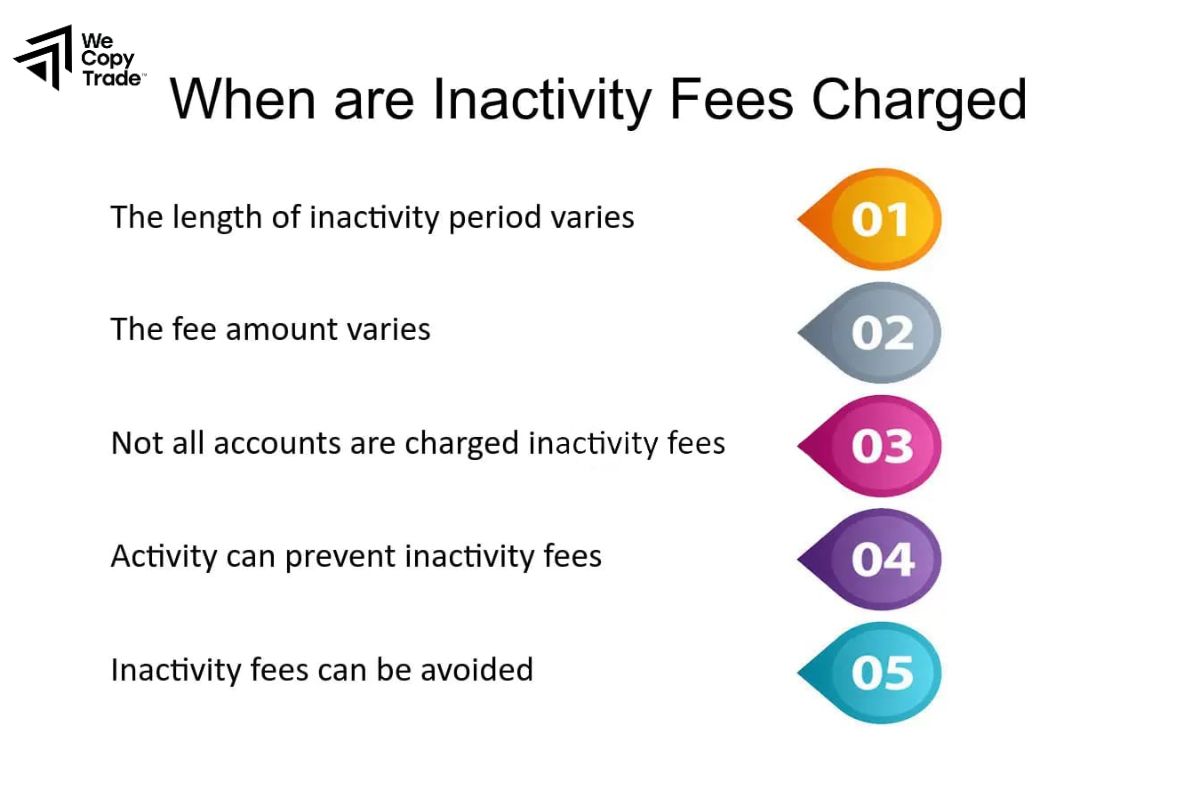Inactivity fees are charges that financial institutions or service providers impose on accounts with little or no activity over a certain period. Understanding how inactivity fee work and taking simple steps to avoid them can save you from unnecessary costs. Stay in control of your account, keep it active, and explore ways to prevent these fees from impacting your finances. Learn more about how to manage your account effectively and avoid inactivity fees today!
What is an Inactivity Fees?

An inactivity fees is a charge that banks, brokerage firms, or other service providers impose on accounts that have gone unused or have minimal activity for a specific period. This fee is intended to encourage account holders to maintain regular activity, such as transactions, investments, or other interactions with the account.
Inactivity fees are common in the financial sector, especially with brokerage and trading accounts, where maintaining activity helps the provider cover account maintenance and other operational costs. These fees can vary in amount and frequency, depending on the provider’s policies, and are typically disclosed in the account’s terms and conditions.
To avoid inactivity fees, account holders can make small periodic transactions, schedule regular investments, or choose account options that don’t require minimum activity.
See now:
- How to Open Mini and Micro Accounts Easily in just 5 steps
- What are Islamic Accounts in Forex? Top Accounts Forex
- Tips ECN Accounts Trading for beginner you should know
When is an Inactivity Fees charged?
An inactivity fee is charged by some financial platforms or brokers when an account has no trading or financial activity for a specified period. The specifics vary, but here’s how it generally works:

- Time Frame: The fee is usually charged if there’s no activity (such as trading, depositing, or withdrawing) within a defined period—typically 3, 6, or 12 months.
- Criteria for Inactivity: Inactivity often means that the account hasn’t had any trades or other forms of transactions during that period. Logging in may not be enough to avoid this fee on some platforms; a financial transaction might be required.
- Fee Amount and Frequency: The fee amount and frequency vary by platform, with some charging monthly or quarterly until the account becomes active again or is closed.
- Account Types: Certain account types, especially those with minimal balances, may be more prone to inactivity fees.
What is the average Inactivity Fees?

The average Inactivity Fees can vary depending on the platform, but generally, it ranges between $10 to $50 per month. Some brokers or financial institutions may charge a fixed fee, while others may charge a percentage of the account balance. Here’s a breakdown:
- Low-end: Smaller platforms or those with lower fees may charge around $10 to $15 per month.
- Mid-range: More established platforms might charge around $20 to $30 per month.
- High-end: Larger, more traditional financial institutions may charge fees of $40 to $50 per month for inactivity.
It’s important to note that some platforms only charge this fee after a longer period of inactivity (e.g., 12 months), while others may charge it sooner. Always check the platform’s terms and conditions to avoid surprise charges.
How long will I be charged?
The duration for which an inactivity fee is charged depends on the specific platform’s policy. Typically, the inactivity fee will continue to be charged until one of the following occurs:

Account Activity Resumes
Once you make a transaction, the inactivity fee will generally stop being applied. If you resume activity, the fee is typically suspended.
Account Closure
Some platforms may stop charging the inactivity fee if you close the account. However, you may need to formally request account closure or meet certain conditions to avoid ongoing charges.
Reaching a Maximum Limit
In some cases, the inactivity fee might only apply for a specific number of months, such as 6 months or a year. After reaching this period, the charges could stop or the account may be deactivated.
Example of an Inactivity Fees
Here’s an example of how an Inactivity Fees might work:

Platform: ABC Trading Platform
Inactivity Fee: $15 per month
Criteria: No trading, depositing, or withdrawing for 6 months.
Month 1
You sign up for ABC Trading Platform and deposit $500 into your account.
Month 2 to Month 5
You do not make any trades or transactions but continue to log in to your account occasionally.
Month 6
Since there has been no activity (no trading, depositing, or withdrawing), ABC Trading Platform applies a $15 inactivity fee.
Month 7
The inactivity fee is charged again since your account is still inactive.
If you continue to leave your account inactive, the $15 fee will keep getting charged monthly until either:
- You perform an action (e.g., make a trade or withdrawal), or
- You decide to close your account.
If I continue to trade on my account, will I be credited with any Inactivity Fees?

No, if you continue to trade or engage in any other activity on your account, you will not be charged an inactivity fee. In fact, trading or performing any transaction (such as deposits or withdrawals) typically resets the inactivity clock, preventing the fee from being applied.
Inactivity fees are only charged when there has been no trading or account activity for a specified period (often 3, 6, or 12 months). As long as you maintain regular activity, such as making trades, deposits, or withdrawals, you should not incur an inactivity fee.
Conclusion
In conclusion, inactivity fees can be a frustrating and unnecessary expense, but they can be easily avoided with regular account activity. Whether you’re trading, depositing, or withdrawing, staying engaged with your account ensures that these fees won’t impact your balance. Don’t let inactivity fee sneak up on you, stay proactive and keep your account in good standing.
See more:











